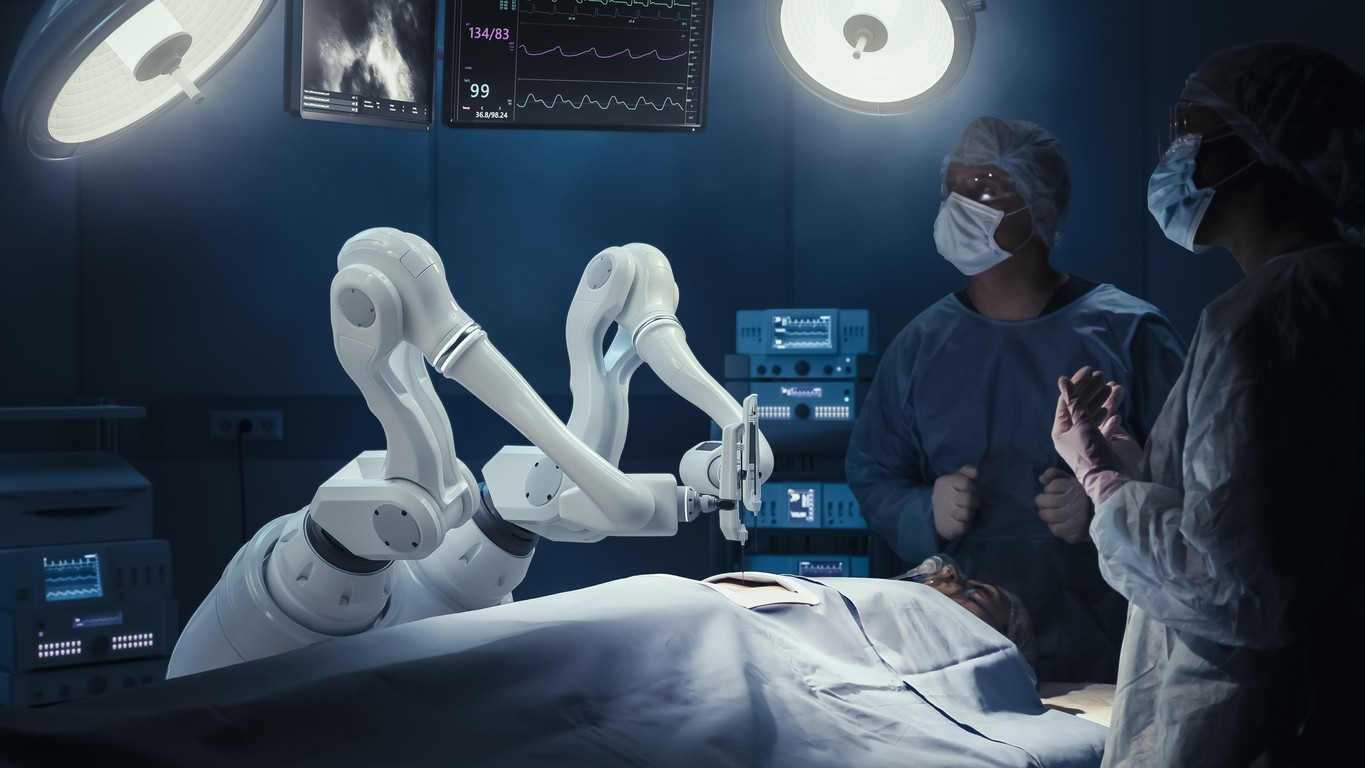Robotic surgery is transforming the landscape of modern medicine. With the integration of robotics and advanced imaging, surgeons can now perform complex procedures with unmatched precision, flexibility, and control, often through tiny incisions and with minimal trauma to surrounding tissues. At the forefront of this movement is Liv Hospital, where highly skilled teams utilize robotic systems to offer patients quicker recovery, reduced complications, and optimal results.
What Is Robotic Surgery?
Robotic surgery is a minimally invasive surgical technique that uses robotic systems to assist surgeons in performing operations. The most widely used system, the da Vinci Surgical System, features robotic arms equipped with miniaturized surgical tools and a 3D high-definition camera. Surgeons control these arms from a control console that precisely translates their hand, wrist, and finger movements into micromovements of the robotic instruments within the patient’s body. This setup provides superior dexterity, access, and visualization compared to traditional minimally invasive approaches.
Robotic-assisted systems allow even the most delicate processes, such as suturing nerves, removing tumors, or reconstructing arteries, to be performed safely and efficiently, from urological and gynecological procedures to heart, general, and colorectal surgeries.
Main Specialties and Procedures for Robotic Surgery
At Liv Hospital, robotic surgery is successfully performed across several medical specialties:
- Urology: Prostatectomy (prostate removal), kidney tumor excision, bladder surgery, and ureteral reconstruction.
- Gynecology: Hysterectomy for uterine cancer, removal of ovarian cysts or fibroids, and endometriosis surgeries.
- Cardiac Surgery: Coronary artery bypass grafting and heart valve repairs with minimal incisions.
- General Surgery: Gallbladder removal, hernia repairs, bariatric (obesity) surgery, and cancer resections.
- Colorectal Surgery: Surgical treatment of colon and rectal cancers with improved precision and faster healing.
- Orthopedic Surgery: Robotic-assisted knee and hip prosthesis surgeries for greater alignment and fewer complications.
The versatility of robotic platforms means they can be adapted for pediatric, thoracic, and even ENT (ear, nose, throat) procedures at advanced surgical centers like Liv Hospital.
Benefits of Robotic Surgery for Patients
Robotic surgery provides significant advantages over both open and conventional minimally invasive surgery:
- Greater precision and control: Robotic arms mimic a human wrist’s flexibility, allowing delicate maneuvers even in hard-to-reach areas.
- Minimized trauma and blood loss: Tiny incisions lead to less tissue damage, less postoperative pain, reduced blood loss, and a lower risk of wound infection.
- Shorter hospital stay and faster recovery: Most patients can return to normal life significantly sooner.
- Cosmetically superior results: Small incisions leave less noticeable scars.
- Clearer vision for surgeons: 3D, high-definition imaging enhances depth perception and structure identification, reducing the chance of complications.
These benefits make robotic surgery the gold standard for suitable cases, as practiced at Liv Hospital’s Robotic Surgery Center.
How Robotic Surgery Works at Liv Hospital
At Liv Hospital, the robotic surgery program brings together interdisciplinary teams and the latest generation technologies. The key steps include:
- Preoperative assessment: Comprehensive imaging, risk analysis, and planning.
- Surgical robotics system: The surgeon sits at a console, viewing a magnified 3D image of the site while controlling robotic arms that move with unrivaled accuracy.
- Minimally invasive approach: Instruments are inserted through keyhole incisions, minimizing patient trauma.
- Advanced recovery programs: Postoperative care and rehabilitation are tailored to encourage early mobilization and speed healing.
Robotic surgery at Liv Hospital covers general, gynecological, urological, cardiac, orthopedic, and many other specialties. Each procedure is designed for optimal safety, patient satisfaction, and long-term health outcomes.
Who Can Benefit from Robotic Surgery?
Robotic procedures are suitable for a wide range of patients, including those seeking shorter hospital stays, less pain, or better cosmetic outcomes. Ideal candidates are evaluated carefully by Liv Hospital’s multidisciplinary team, which considers the complexity of the operation, existing health conditions, and patient preferences. Early consultation offers the best path to selecting the optimal treatment method.
Why Choose Liv Hospital for Robotic Surgery?
- Cutting-edge technology: Liv Hospital boasts next-generation robotic systems and internationally recognized surgical expertise.
- Comprehensive surgical care: From preoperative evaluation to postoperative rehabilitation, every stage is handled with patient safety in mind.
- Multidisciplinary expertise: Surgeons collaborate across specialties for complex cases, offering bespoke care for both adults and children.
- Global patient service: Liv Hospital welcomes international patients and supports them before, during, and after their robotic surgical journey.
Visit the Liv Hospital homepage or the Robotic Surgery Center in Turkey to learn more or schedule a consultation.















